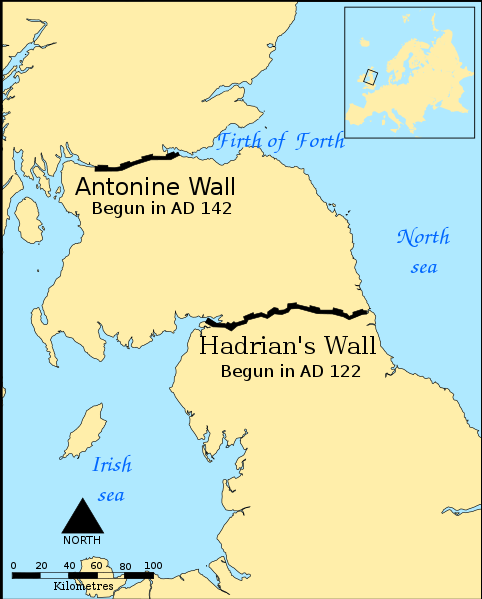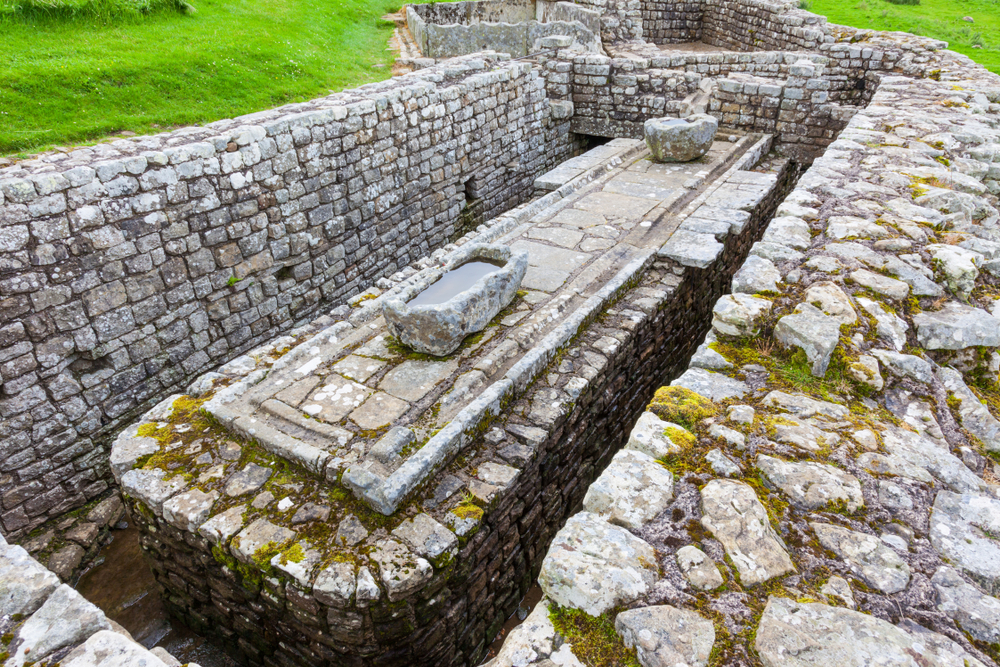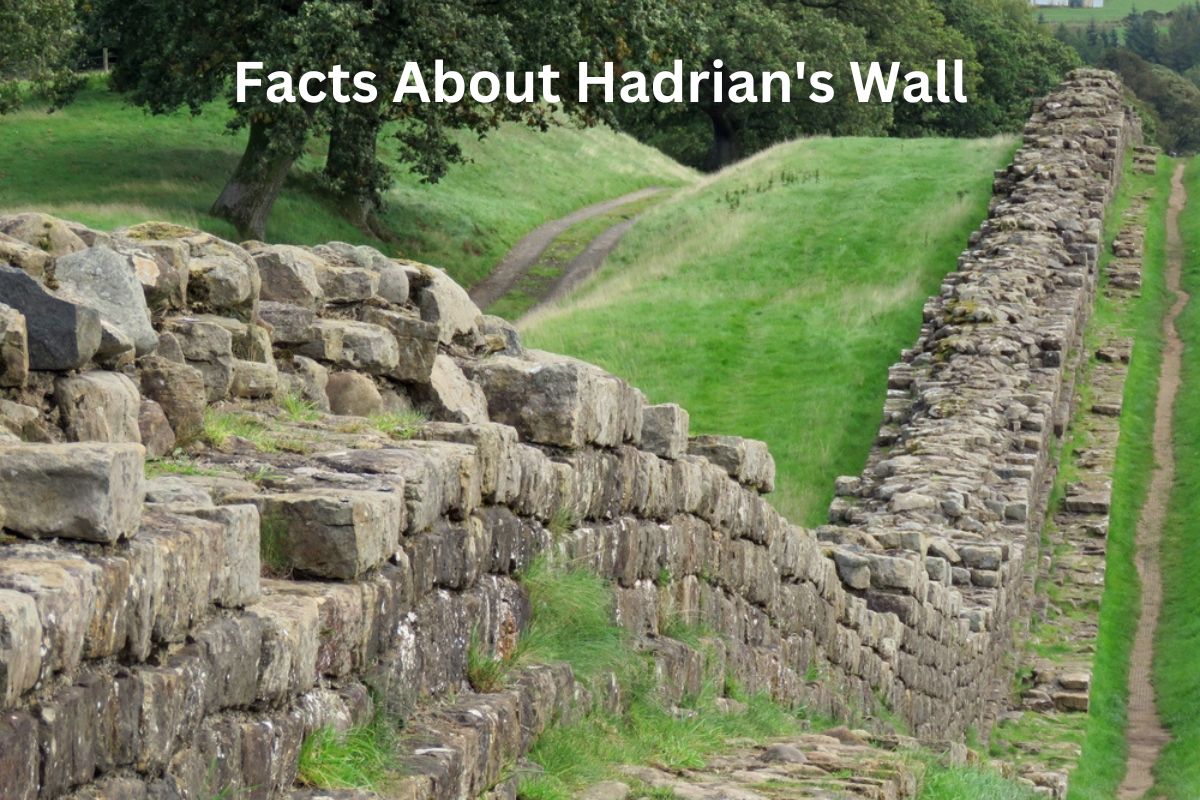Hadrian’s Wall is an iconic structure that stretches approximately 73 miles across the northern part of England. Built during the Roman Empire under Emperor Hadrian’s orders in AD 122, it served as a physical barrier, symbol of Roman power, and a defense against potential attacks from the north.
Constructed using stone and turf, the wall stood about 15 feet high and was accompanied by a ditch called the Vallum on the southern side.
For nearly 300 years, it marked the northern boundary of the Roman Empire. Today, Hadrian’s Wall is a UNESCO World Heritage Site and a popular tourist destination, offering a glimpse into the fascinating history of the Roman Empire.
Hadrian’s Wall Facts
1. Built during the Roman Empire
Hadrian’s Wall was constructed during the time of the Roman Empire, specifically under the rule of Emperor Hadrian. The Roman Empire was a vast and powerful civilization that spanned several continents, and the construction of Hadrian’s Wall was part of their efforts to secure their northern frontier.
2. Stretches about 73 miles across northern England
Hadrian’s Wall extends for approximately 73 miles (117 kilometers) across the northern part of England.
Also Read: Hadrian Accomplishments
It traverses the narrowest section of the island of Great Britain, reaching from the North Sea in the east to the Irish Sea in the west. The wall was strategically positioned to create a physical barrier and control movement in this region.

3. Constructed under Emperor Hadrian’s orders in AD 122
The wall was commissioned and ordered to be built by Emperor Hadrian in the year AD 122. Hadrian was one of the Roman Empire’s most influential emperors, known for his extensive travels and ambitious building projects.
He visited the region and likely decided to construct the wall as a means to assert Roman control and improve defense along the northern frontier. The wall was named after him to honor his involvement in its construction.
4. Made of stone and turf, approximately 10 feet wide and 15 feet high
Hadrian’s Wall was constructed using a combination of stone and turf. The lower section of the wall was built with a foundation of large stones, and the upper portion was made of smaller stones held together with mortar. Earth and turf were then piled on top to create a solid structure.
The wall was approximately 10 feet (3 meters) wide, wide enough for soldiers to patrol along its top, and stood about 15 feet (4.5 meters) high, providing a formidable barrier.

5. Had multiple purposes: control movement, symbolize Roman power, and defense
Hadrian’s Wall served several important purposes for the Roman Empire. Firstly, it acted as a physical barrier to control and regulate the movement of people and goods across the frontier.
The wall also served as a symbol of Roman power and authority, showcasing the might and reach of the empire. Additionally, the wall functioned as a defensive structure, with garrisons stationed along its length to deter and defend against potential attacks from the north.
6. Accompanied by a ditch called the Vallum on the southern side
In addition to the wall itself, a wide ditch called the Vallum was dug on the southern side of Hadrian’s Wall.
The Vallum was likely constructed as an additional obstacle and a demarcation line. It ran parallel to the wall and was approximately 20 feet (6 meters) wide and 10 feet (3 meters) deep.
The presence of the Vallum added an extra layer of defense and helped to reinforce the boundary between the Roman-controlled territory and the lands to the south.

7. Marked the northern boundary of the Roman Empire for nearly 300 years
Hadrian’s Wall served as the northernmost boundary of the Roman Empire for a significant period of time. It remained a symbolic and physical demarcation line for nearly 300 years, from its completion in AD 122 until the Roman withdrawal from Britain in the early 5th century. It represented the extent of Roman control and influence in the region during that time.
8. Involved thousands of soldiers and workers during construction
The construction of Hadrian’s Wall was a massive undertaking that required the labor of thousands of individuals. Roman soldiers, as well as civilian workers and skilled craftsmen, were involved in the building process.
The soldiers, in particular, played a crucial role in the construction and subsequent maintenance of the wall. They provided the manpower needed to transport materials, construct the fortifications, and ensure the wall’s defense.
9. Included forts, milecastles, and watchtowers along its length
Along the length of Hadrian’s Wall, a series of forts, milecastles, and watchtowers were strategically positioned. Forts served as larger garrison bases where Roman soldiers resided and coordinated operations.
Milecastles, smaller fortified structures, were placed at regular intervals, roughly one Roman mile apart, and served as checkpoints along the wall. Watchtowers, often positioned between milecastles, provided additional surveillance points for monitoring the surrounding area and signaling any potential threats.
10. Now a UNESCO World Heritage Site and popular tourist attraction
Today, Hadrian’s Wall is a designated UNESCO World Heritage Site and a major tourist attraction. The remains of the wall, along with its associated structures and archaeological sites, continue to captivate visitors from around the world.
Tourists can explore sections of the wall, visit museums and visitor centers that provide insights into its history, and learn about the daily life and experiences of the Roman soldiers stationed along the wall.
The significance of Hadrian’s Wall as a testament to Roman engineering and its role in shaping the history of Britain continues to attract people interested in ancient history and archaeological wonders.
